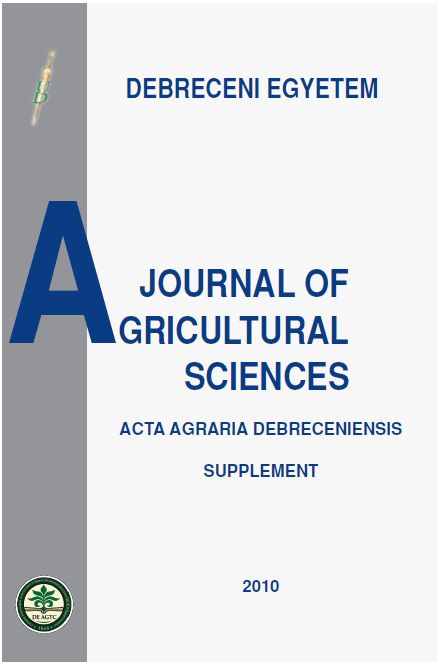Effects of long-term K fertilization and liming on the extractable and exchangeable K contents of a Haplic Phaeosem soil
Authors
View
Keywords
License

This work is licensed under a Creative Commons Attribution 4.0 International License.
How To Cite
Abstract
Effects of regular K fertilization and liming on the easily extractable K content of a Haplic phaeosem soil determined in 0.01 M CaCl2
and AL (traditional method in Hungary) were examined in the B1740 type of the National Uniformed Long-Term Fertilization Experiments
at Karcag.
Close correlation (r=0.95) was found between the 0.01 M CaCl2 and ammonium lactate - acetic acid (AL) extractable K contents of
soils.
K fertilization increased the amount of 0.01 M CaCl2 and AL extractable K significantly. Liming had different effects on the amounts of
K extracted by these two methods. Liming increased the amount of AL-K and decreased the amount of CaCl2-K. CaCl2 extractable K was in
close correlation with the relative amount of exchangeable K content of the soil (K%) and the agronomic K balance. The results of regression
analysis confirmed that the CaCl2-K characterized K% and the AL-K related to the absolute amount of exchangeable K.
On the basis of the presented results it can be stated that the 0.01 M CaCl2 is able to detect not just the increase of easily extractable K
caused by fertilization and liming but the changing of the rate of the relative amount of exchangeable K.

 https://doi.org/10.34101/actaagrar/I/8392
https://doi.org/10.34101/actaagrar/I/8392